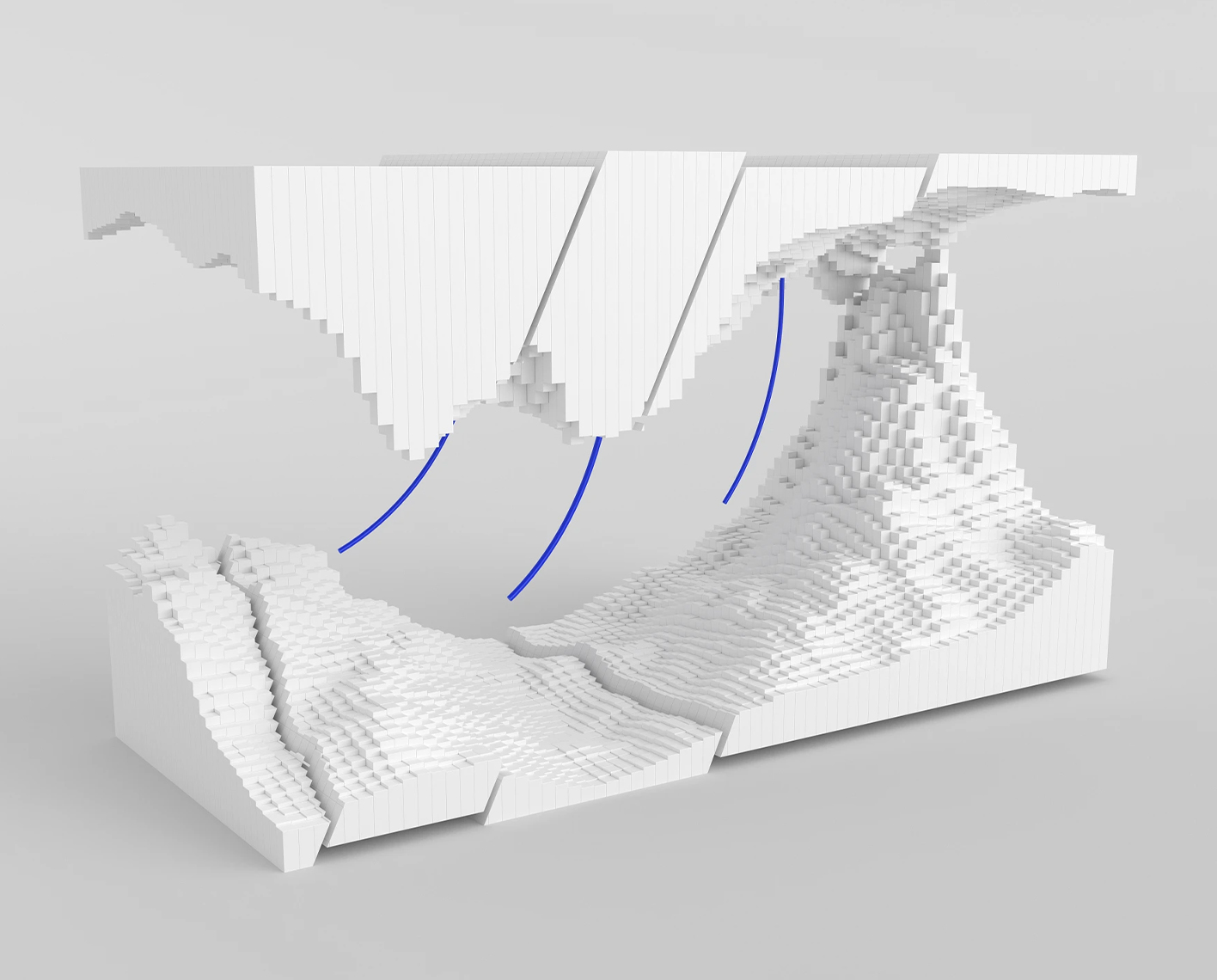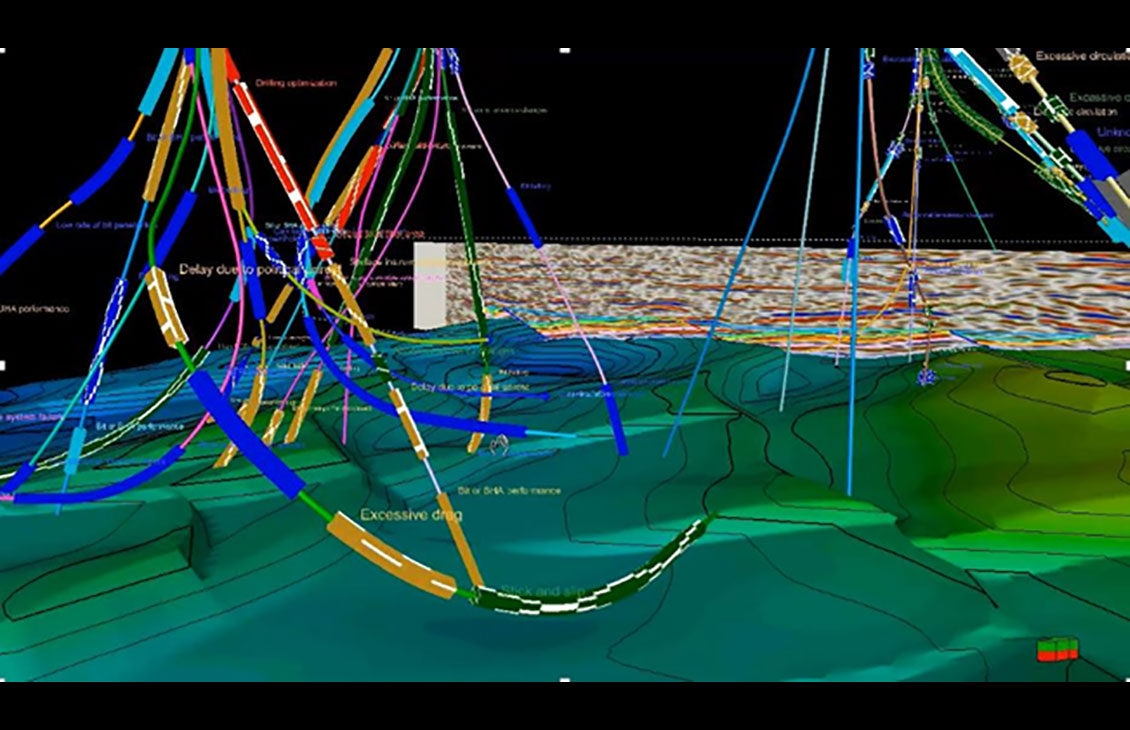Integrated trajectory workflow in 3D earth model
The well path design and well positioning workflows use industry-standard engines to enable you to quickly design and validate all well trajectories, drillable wells, sidetracks, and multilaterals, as well as perform drilling target and anticollision analysis—all in the context of your 3D earth model.
Once the wells are planned, attributes can be adjusted for cost, directional complexity, and platform locations, while ensuring maximum reservoir contact. All changes are viewable in geological context within a 3D window.
The well positioning workflow increases confidence in anticollision analysis by visualizing critical results within a 2D or 3D space: this is especially useful in congested offshore or land development environments. Calculating the no-go zone for each offset well steps down each ellipsoid of uncertainty of the offset well trajectory and computes the perpendicular cross section as well as the minimum allowable separation distance for each direction. The 3D no-go space is constructed by connecting all of the no-go cross sections on each offset well, from wellhead to TD.
Project or window anticollision scans can be run interactively while planning or drilling. Collision risk levels are highlighted in a window—high-risk level displayed in red, low-risk level in green—providing a quick indication of the success of the anticollision scenario.
Integrated geomechanics
The Mud Weight Predictor (MWP) plug-in for the Petrel platform provides advanced wellbore stability postprocessing for your geomechanical models. The purpose is to assist in choosing the density of drilling mud to keep the well mechanically stable and avoid influx of fluids, thus assessing drilling risks on the basis of a geomechanical model.
The workflows incorporate heterogeneous distribution of the mechanical properties and stresses from a geomechanical model and convert this information into mud-weight window limits and width for a given well direction. This enables you to choose the most stable path and, depending on the width of the mud-weight window, safe and unsafe zones for drilling can be identified, which allows well design to minimize drilling problems and mitigate risks.










